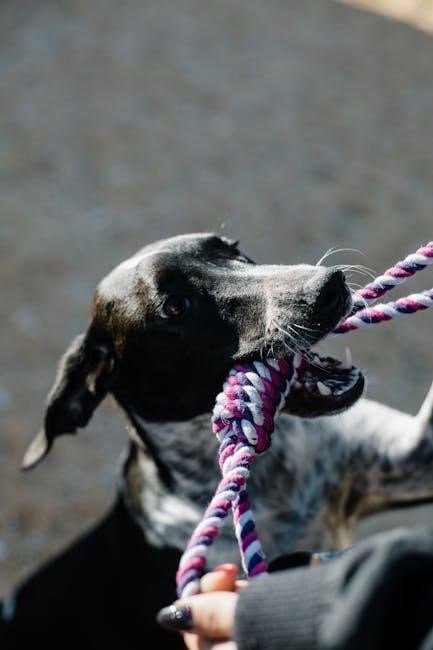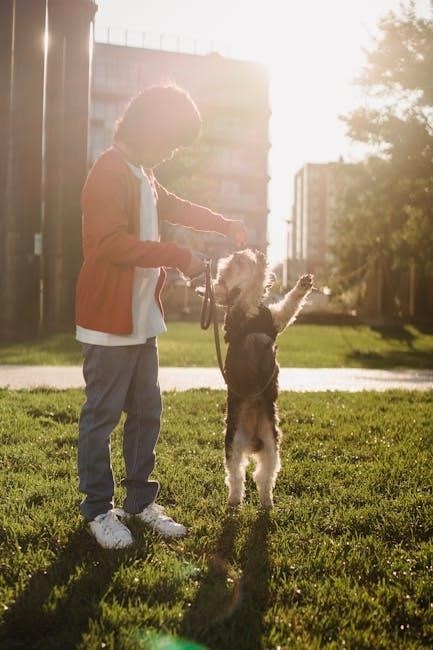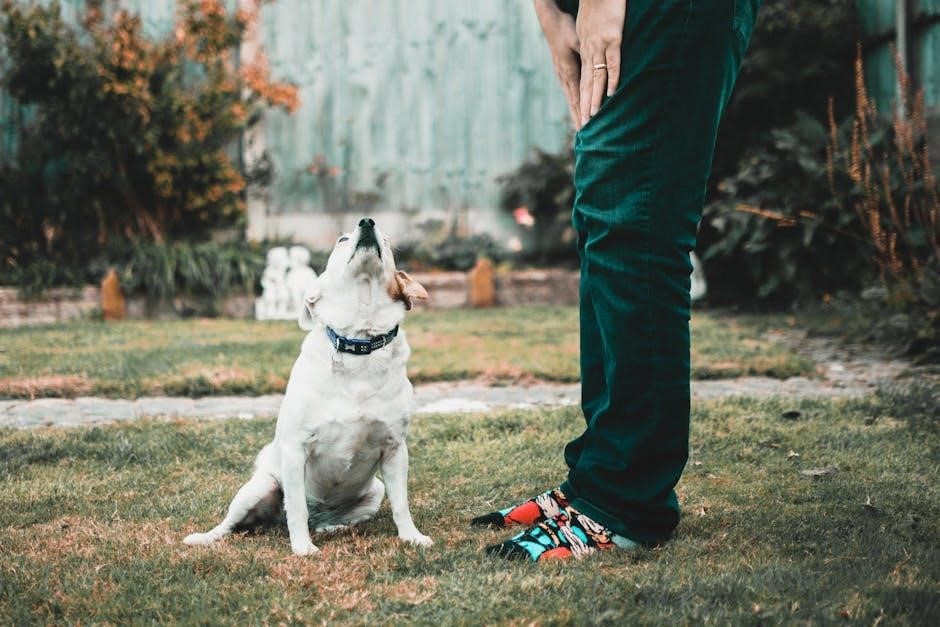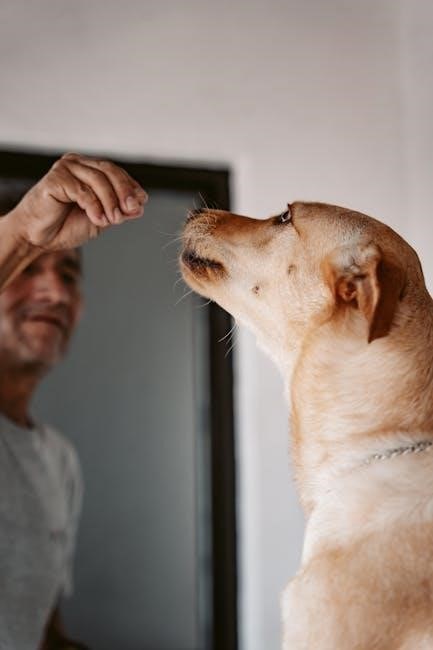Learning puppy potty training schedule pdf requires patience and consistency, establishing a routine helps puppies learn quickly, using online resources and planning ahead is essential always.
Understanding the Importance of Potty Training
Potty training is a crucial aspect of dog ownership, and understanding its importance is vital for a happy and healthy relationship between dog and owner. According to various online resources, potty training helps prevent accidents and messes in the home, reducing stress and anxiety for both parties. A well-structured puppy potty training schedule pdf can aid in this process, providing a clear and concise plan for owners to follow. By prioritizing potty training, owners can help their puppies develop good habits and prevent undesirable behaviors. Effective potty training also strengthens the bond between dog and owner, fostering trust and communication. Moreover, a well-trained puppy is less likely to develop behavioral problems, making it an essential investment for any dog owner. With patience, consistency, and the right guidance, potty training can be a rewarding experience for all involved.

Setting Up a Strict Schedule
Establishing a routine with a puppy potty training schedule pdf helps puppies learn quickly and effectively always.
Creating a Routine for Potty Breaks
Creating a routine for potty breaks is essential for successful puppy potty training, a well-structured puppy potty training schedule pdf can help owners plan ahead and establish a consistent routine.
Using online resources and planning ahead is essential to create an effective routine, taking into account the puppy’s age and developmental stage.
A routine should include regular potty breaks, such as after meals and playtime, and immediately after waking up, consistency is key to helping puppies learn when and where to go potty.
By following a routine and using positive reinforcement, owners can help their puppies learn good potty habits and minimize house-soiling incidents, a well-planned routine can make a big difference in the success of puppy potty training.
Regular potty breaks and a consistent routine can help puppies feel secure and develop good habits.

Using Crate Training for Potty Training
Crate training helps with potty training by confining puppies when owners are away, reducing accidents always.
Benefits of Crate Training for Puppies
Crate training provides a safe space for puppies, helping with potty training and reducing separation anxiety, it also prevents destructive behavior when owners are away.
Using a crate can help with housetraining by giving puppies a designated area to hold their bladder and bowels, reducing accidents in the house.
A crate can also serve as a comfort zone for puppies, providing a sense of security and familiarity, which is especially important for young puppies.
Crate training can be an effective tool for puppy owners, helping to establish good habits and prevent bad behaviors, it is essential to introduce the crate gradually and make it a positive experience.
Puppies will learn to love their crate, and it will become a valuable tool for owners, helping to create a well-behaved and well-trained puppy, with proper crate training, puppies can thrive.

Communicating Potty Needs to Owners
Puppies learn to communicate potty needs using potty bells or whining to alert owners quickly always.
Teaching Puppies to Use Potty Bells or Doggy Doors
Teaching puppies to use potty bells or doggy doors is a great way to communicate their potty needs to owners. This method allows for more freedom and flexibility in potty training. By hanging potty bells on the door, puppies can learn to ring them to signal their need to go outside. Similarly, installing a doggy door provides puppies with a convenient way to access the outdoors when they need to eliminate. Consistency and patience are key when teaching puppies to use these methods. With time and practice, puppies can learn to use potty bells or doggy doors effectively, making potty training easier and more efficient for both puppies and owners. Using online resources and planning ahead can also help with this process, ensuring a successful potty training experience.

Factors Affecting Potty Training Success
Puppy age and size affect potty training using a schedule and consistency always.
Age and Developmental Stage of the Puppy
The age and developmental stage of a puppy play a significant role in potty training, with younger puppies requiring more frequent potty breaks and older puppies able to hold their bladder for longer periods. A puppy’s developmental stage can affect their ability to learn and understand potty training, with some puppies being more receptive to training at certain ages. Using a potty training schedule can help take into account a puppy’s age and developmental stage, allowing for a more effective and successful potty training experience. By considering a puppy’s individual needs and abilities, owners can create a potty training plan that is tailored to their puppy’s unique requirements, increasing the chances of successful potty training and a strong bond between puppy and owner. This approach can be applied to puppies of all ages and breeds.
Minimizing House-Soiling Incidents
Establishing a routine and supervising puppies helps minimize house-soiling incidents always using puppy pads and planning ahead is essential for owners.
Consistency and Patience in Potty Training
Consistency and patience are key elements in potty training, as puppies thrive on routine and clear communication. Using a puppy potty training schedule pdf can help owners establish a consistent routine, taking into account the puppy’s age, breed, and individual needs. A well-structured schedule helps puppies learn when and where to eliminate, reducing the risk of accidents and house-soiling incidents. By sticking to a consistent schedule and rewarding good behavior, owners can help their puppies develop good habits and a strong foundation for future training. With patience and consistency, owners can help their puppies overcome challenges and achieve successful potty training, leading to a stronger bond and a happier, healthier relationship. Regular updates and adjustments to the schedule can also help owners stay on track and address any issues that may arise during the training process.



